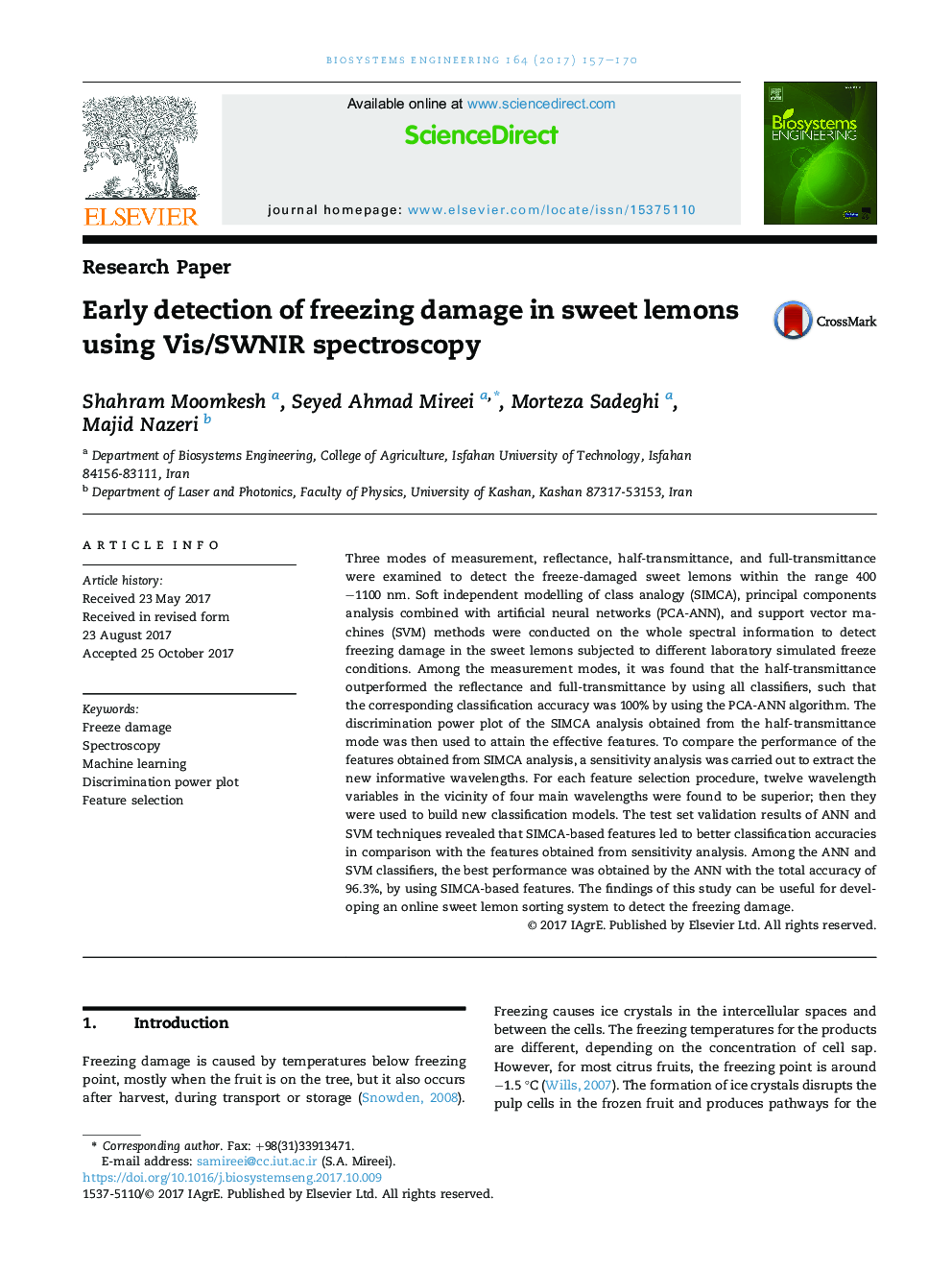| Article ID | Journal | Published Year | Pages | File Type |
|---|---|---|---|---|
| 8054926 | Biosystems Engineering | 2017 | 14 Pages |
Abstract
Three modes of measurement, reflectance, half-transmittance, and full-transmittance were examined to detect the freeze-damaged sweet lemons within the range 400-1100Â nm. Soft independent modelling of class analogy (SIMCA), principal components analysis combined with artificial neural networks (PCA-ANN), and support vector machines (SVM) methods were conducted on the whole spectral information to detect freezing damage in the sweet lemons subjected to different laboratory simulated freeze conditions. Among the measurement modes, it was found that the half-transmittance outperformed the reflectance and full-transmittance by using all classifiers, such that the corresponding classification accuracy was 100% by using the PCA-ANN algorithm. The discrimination power plot of the SIMCA analysis obtained from the half-transmittance mode was then used to attain the effective features. To compare the performance of the features obtained from SIMCA analysis, a sensitivity analysis was carried out to extract the new informative wavelengths. For each feature selection procedure, twelve wavelength variables in the vicinity of four main wavelengths were found to be superior; then they were used to build new classification models. The test set validation results of ANN and SVM techniques revealed that SIMCA-based features led to better classification accuracies in comparison with the features obtained from sensitivity analysis. Among the ANN and SVM classifiers, the best performance was obtained by the ANN with the total accuracy of 96.3%, by using SIMCA-based features. The findings of this study can be useful for developing an online sweet lemon sorting system to detect the freezing damage.
Related Topics
Physical Sciences and Engineering
Engineering
Control and Systems Engineering
Authors
Shahram Moomkesh, Seyed Ahmad Mireei, Morteza Sadeghi, Majid Nazeri,
